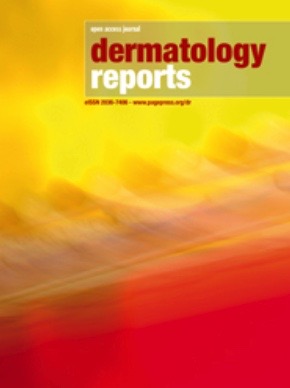Report on the Origins of SARS-CoV-2 and Its Implications for Sustainable Development Goals (SDGs)

Introduction
The WHO Scientific Advisory Group for the Origins of Novel Pathogens (SAGO), comprising 27 independent, international, multidisciplinary experts, has published a comprehensive report on the origins of SARS-CoV-2, the virus responsible for the COVID-19 pandemic. This report is critical in advancing global health security and aligns with several Sustainable Development Goals (SDGs), including SDG 3 (Good Health and Well-being) and SDG 17 (Partnerships for the Goals).
Key Findings and Scientific Assessment
SAGO’s investigation has enhanced understanding of the virus’s origins; however, significant gaps remain due to incomplete data sharing. The report emphasizes that all hypotheses remain valid, including zoonotic spillover and laboratory-related origins.
- The prevailing evidence suggests zoonotic spillover, either directly from bats or via an intermediate host.
- Data requested from China, including genetic sequences from early COVID-19 cases, detailed animal market information in Wuhan, and biosafety records from Wuhan laboratories, have not yet been provided.
- SAGO’s updated evaluation incorporates peer-reviewed studies, unpublished data, field research, interviews, audit findings, government and intelligence reports.
Global Collaboration and Ethical Imperatives
Dr. Tedros Adhanom Ghebreyesus, WHO Director-General, highlighted the necessity of transparency and international cooperation to protect global health and prevent future pandemics, underscoring the ethical responsibility inherent in this scientific endeavor. This commitment supports SDG 16 (Peace, Justice and Strong Institutions) by promoting transparency and accountability.
Dr. Marietjie Venter, Chair of SAGO, stressed that understanding SARS-CoV-2 origins is essential to:
- Prevent future pandemics
- Save lives and livelihoods
- Reduce global suffering
These objectives directly contribute to SDG 1 (No Poverty), SDG 2 (Zero Hunger), and SDG 8 (Decent Work and Economic Growth) by mitigating pandemic-related socio-economic impacts.
Historical Context and Mandate
- In late 2020, WHO Member States adopted a resolution mandating the study of SARS-CoV-2 origins.
- A joint international and Chinese expert mission to China took place in early 2021, with findings published in March 2021.
- In July 2021, Dr. Tedros established SAGO with two primary mandates:
- Design a global framework for investigating emerging and re-emerging pathogens (published in 2023)
- Apply this framework to evaluate scientific evidence on COVID-19 origins
Ongoing Efforts and Commitment to SDGs
The investigation into SARS-CoV-2 origins remains ongoing. WHO and SAGO welcome additional evidence and remain committed to transparent, science-based reviews. This continuous effort exemplifies global partnership and resilience, reinforcing SDG 17 (Partnerships for the Goals) and SDG 3 (Good Health and Well-being).
Conclusion
The SAGO report represents a vital step toward understanding the origins of COVID-19, which is indispensable for pandemic prevention and global health security. Achieving these outcomes supports multiple Sustainable Development Goals by fostering health, equity, transparency, and international cooperation.
1. Sustainable Development Goals (SDGs) Addressed or Connected to the Issues Highlighted in the Article
- SDG 3: Good Health and Well-being
- The article focuses on understanding the origins of SARS-CoV-2 to prevent future pandemics, which directly relates to ensuring healthy lives and promoting well-being for all ages.
- SDG 9: Industry, Innovation and Infrastructure
- The scientific investigation and development of a global framework for pathogen origin study involve innovation and scientific research infrastructure.
- SDG 17: Partnerships for the Goals
- The article emphasizes international collaboration, data sharing, and cooperation among WHO, member states, and experts worldwide.
2. Specific Targets Under Those SDGs Identified Based on the Article’s Content
- SDG 3: Good Health and Well-being
- Target 3.d: Strengthen the capacity of all countries for early warning, risk reduction, and management of national and global health risks.
- SDG 9: Industry, Innovation and Infrastructure
- Target 9.b: Support domestic technology development, research and innovation in developing countries.
- SDG 17: Partnerships for the Goals
- Target 17.6: Enhance North-South, South-South and triangular regional and international cooperation on and access to science, technology and innovation.
- Target 17.17: Encourage and promote effective public, public-private and civil society partnerships.
3. Indicators Mentioned or Implied in the Article to Measure Progress Towards the Identified Targets
- For Target 3.d (Health Risk Management):
- Indicator 3.d.1: International Health Regulations (IHR) capacity and health emergency preparedness.
- Implied through the evaluation of global scientific collaboration and data sharing on pathogen origins.
- For Target 9.b (Research and Innovation):
- Indicator 9.b.1: Proportion of medium and high-tech industry value added in total value added.
- Implied by the development and application of a global framework for investigating pathogen origins.
- For Targets 17.6 and 17.17 (Partnerships and Cooperation):
- Indicator 17.6.1: Fixed Internet broadband subscriptions per 100 inhabitants, reflecting access to technology and information sharing.
- Indicator 17.17.1: Amount of United States dollars committed to public-private partnerships.
- Implied by the international cooperation among WHO, SAGO experts, and member states in sharing data and conducting joint missions.
4. Table of SDGs, Targets, and Indicators
| SDGs | Targets | Indicators |
|---|---|---|
| SDG 3: Good Health and Well-being | 3.d: Strengthen capacity for early warning, risk reduction, and management of health risks | 3.d.1: International Health Regulations (IHR) capacity and health emergency preparedness |
| SDG 9: Industry, Innovation and Infrastructure | 9.b: Support domestic technology development, research and innovation | 9.b.1: Proportion of medium and high-tech industry value added in total value added |
| SDG 17: Partnerships for the Goals | 17.6: Enhance international cooperation on science, technology and innovation | 17.6.1: Fixed Internet broadband subscriptions per 100 inhabitants |
| 17.17: Promote effective public, public-private and civil society partnerships | 17.17.1: Amount of USD committed to public-private partnerships |
Source: who.int







